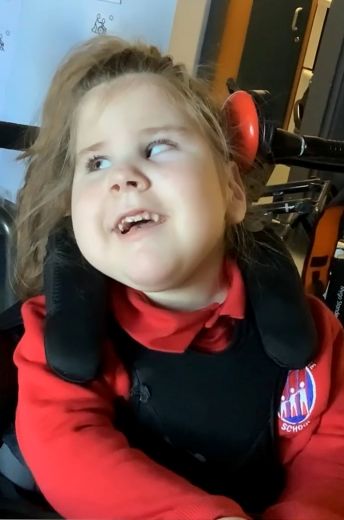
A pioneering educational resource has been launched to ensure the voices of children with complex needs are heard across Scottish education.
Research shows that many children and young people – especially those with the most complex needs – are often deemed unable to take part in key decisions which shape their lives, which can negatively impact their wellbeing.
In response, members of the National Complex Needs Network – facilitated by Education Scotland – created a series of real-life case studies of young people with complex needs
A subgroup of the network, jointly led by Dr Maggie Macaskill from University of Strathclyde’s Institute of Education, and Karen Gebbie-Smith, who works with Aberdeen City’s central Assisted Support Needs (ASN) team, ensured the resource was co-constructed with the young people at its heart.
Removing barriers
In collaboration with practitioners across Scotland, ‘Visible Voices’ promotes and supports voice and agency, enabling engagement of non-speaking learners by identifying and removing barriers.
It also helps staff recognise and respond to non-verbal signals such as eye movement, facial gestures, or a smile, and builds stronger relationships between learners and teachers.
Children and young people were central to the project, with their input guiding practitioners to understand their needs better. Case studies were used to highlight practical applications and the positive impact of systematically removing the barriers and adapting to each learner’s communication preferences.
Dr Macaskill said:
We wanted to illuminate the voices of the most exceptional young people in the Scottish education system – those who require us to listen differently, by producing a resource available to all teachers and others.
“In a society that promotes and favours verbal communication, we aimed to reinforce these young people’s place in the education system and encourage us to build the relationships so that we ‘know’ young people, and value what their communication tells us.
“It provides agency for young people whose communication is rarely heard or subject to adult gatekeeping, with a ‘yes’ and a ‘no’ comes agency, even if they are expressed non-verbally. With agency comes improved mental health, quality of life and wellbeing.”
Learner voice
Karen Gebbie-Smith added: “The resource was developed to inspire, build confidence and develop skills with a view to positively supporting ‘learner voice’.
“It aims to not only support adults in their role as communication partners but to show the positive impact from acting upon the preferences and opinions of our learners with exceptional presentations.
“The case studies demonstrate this not only has a positive effect upon pupil’s lived experiences but can bring positive change within inclusive communities.”
Chloe's story
 Eleven-year-old Chloe, a pupil at an Assisted Support Needs school in Central Scotland, is non-speaking, a wheelchair user, and has cerebral palsy. She communicates using eye movements and vocalisations that are understood by staff who know her well.
Eleven-year-old Chloe, a pupil at an Assisted Support Needs school in Central Scotland, is non-speaking, a wheelchair user, and has cerebral palsy. She communicates using eye movements and vocalisations that are understood by staff who know her well.
Using the ‘Visible Voices’ tool, staff have been able to better understand Chloe’s preferences and include her in daily decision-making. They observed that she flickers her eyes in response to sounds or stimuli she dislikes. When Chloe shows signs of disengagement, such as turning away, staff now acknowledge this and explain what will happen instead.
This approach has supported Chloe’s communication, engagement and wellbeing – ensuring that her views are not only heard but also acted upon.